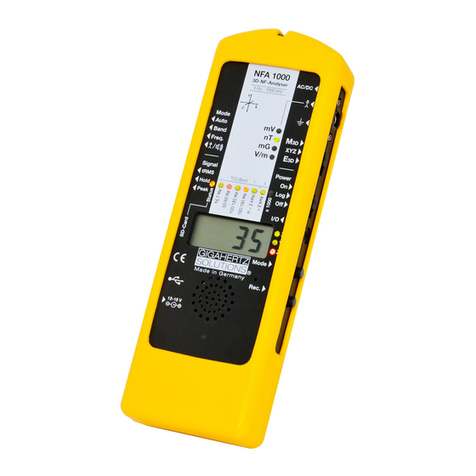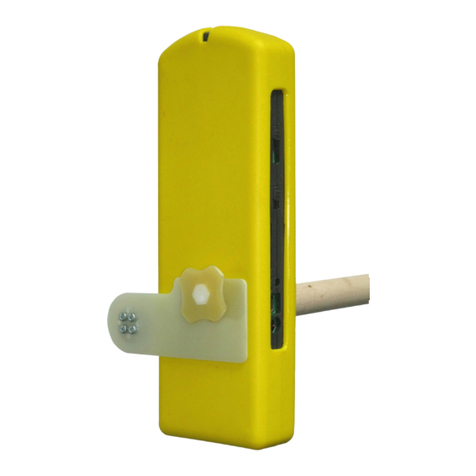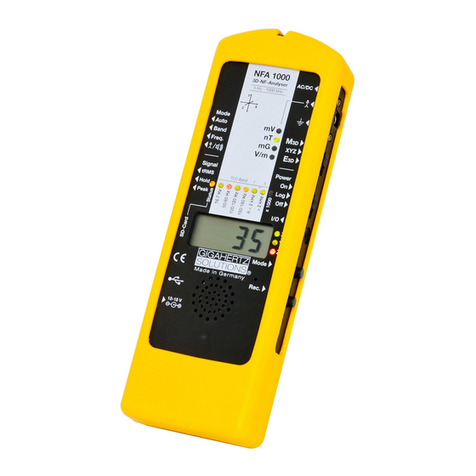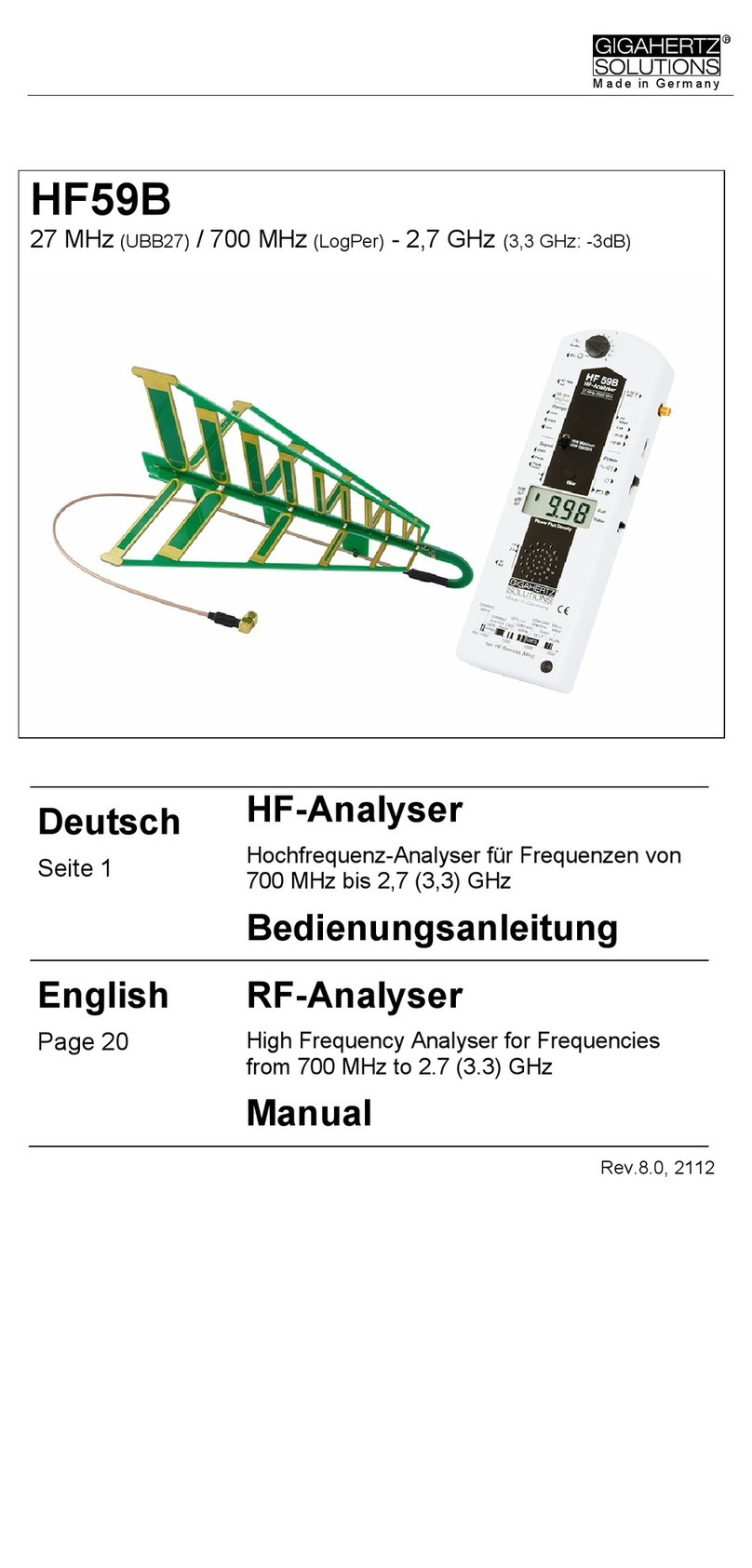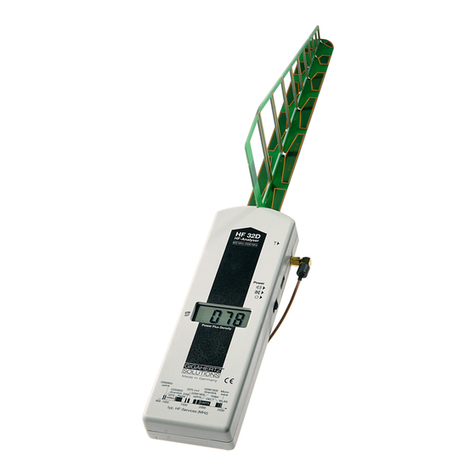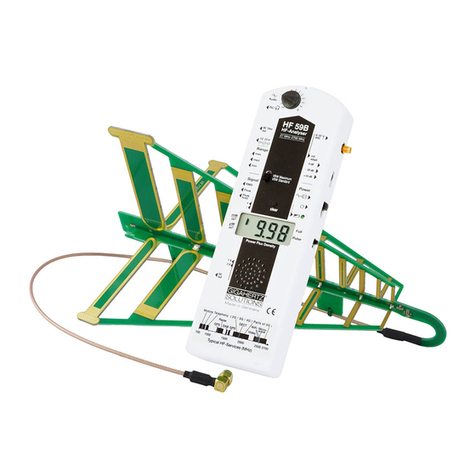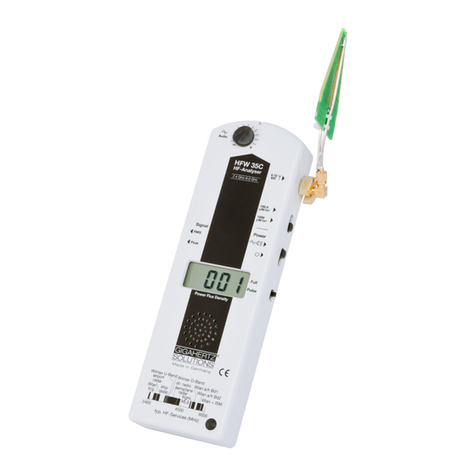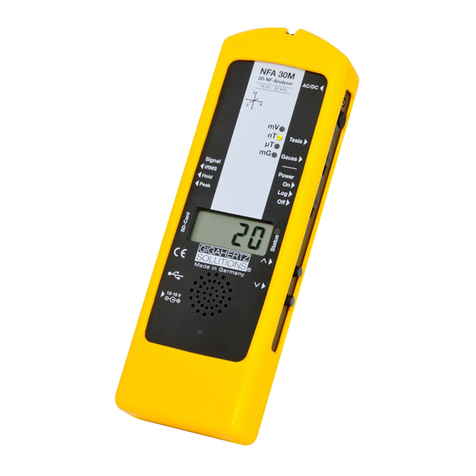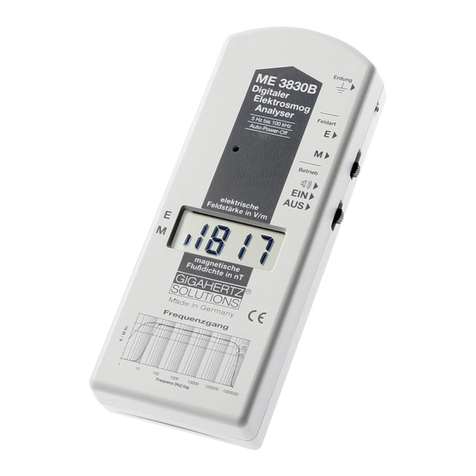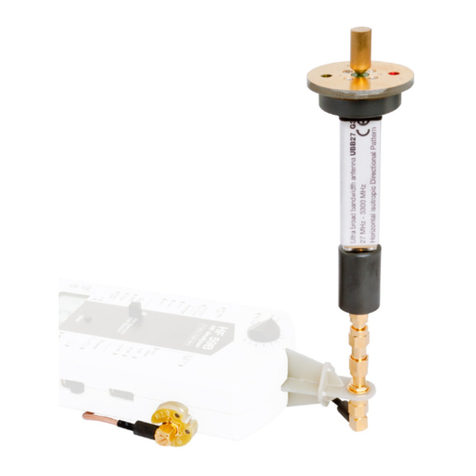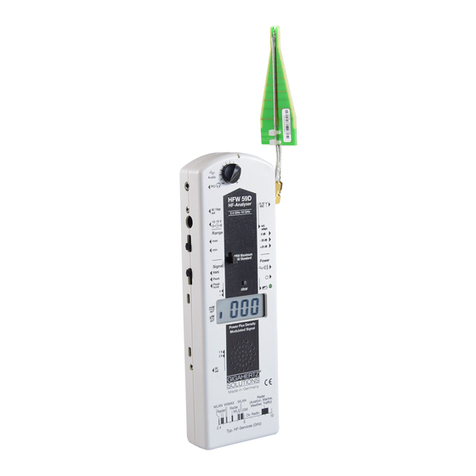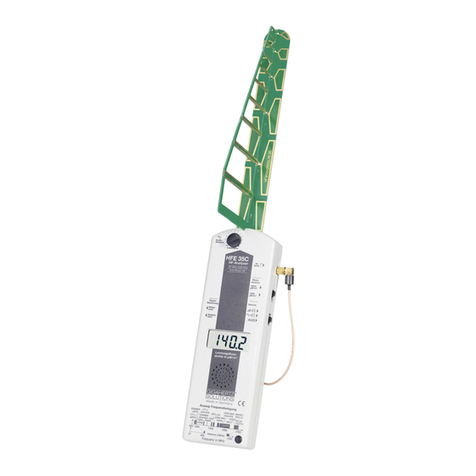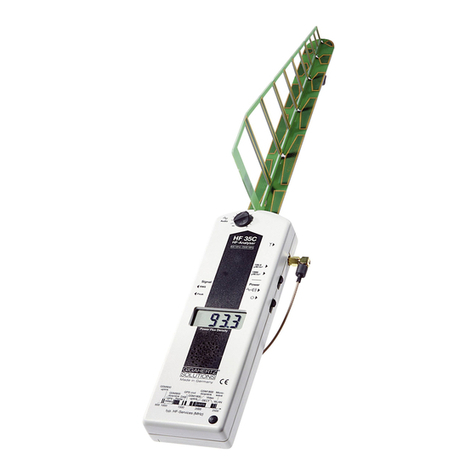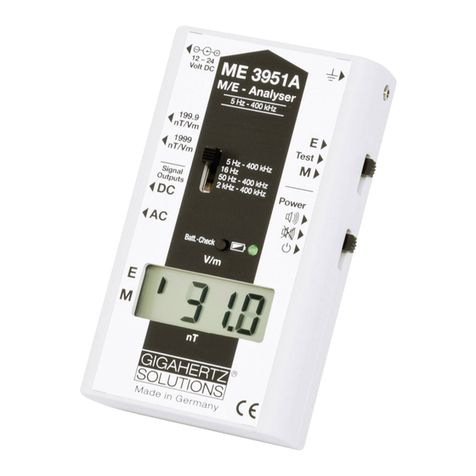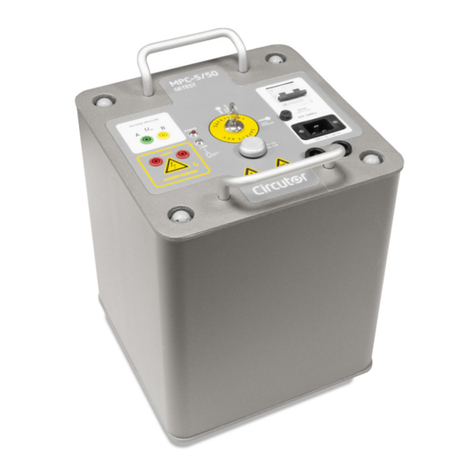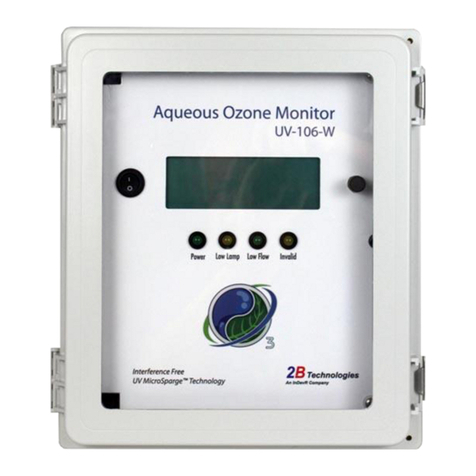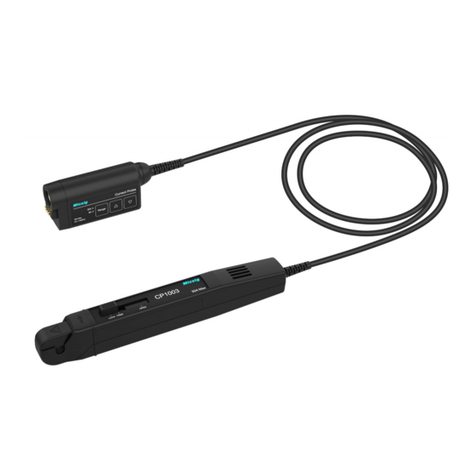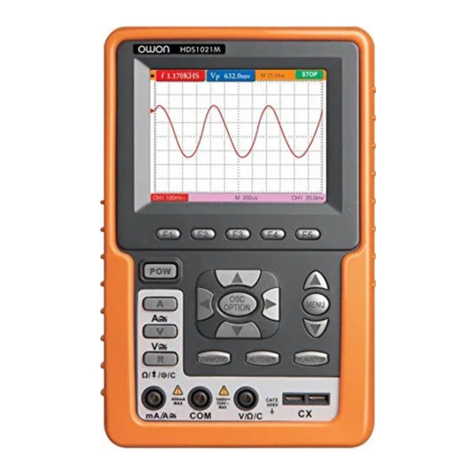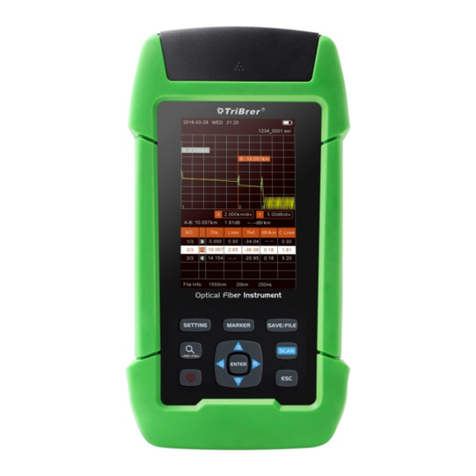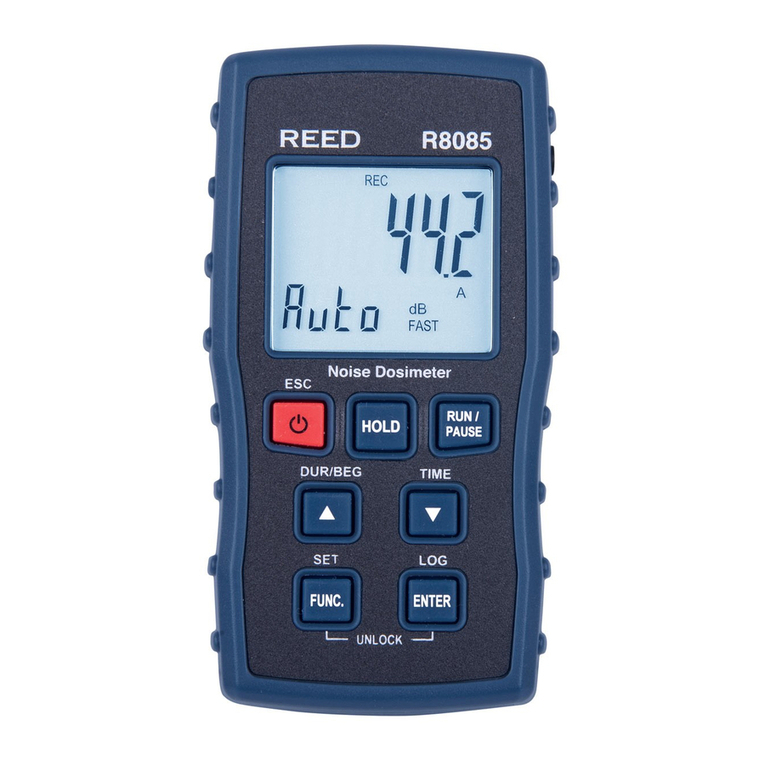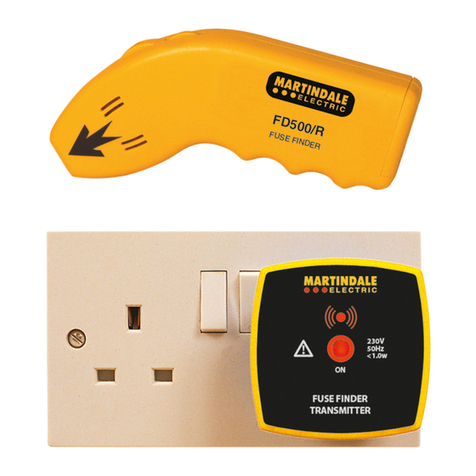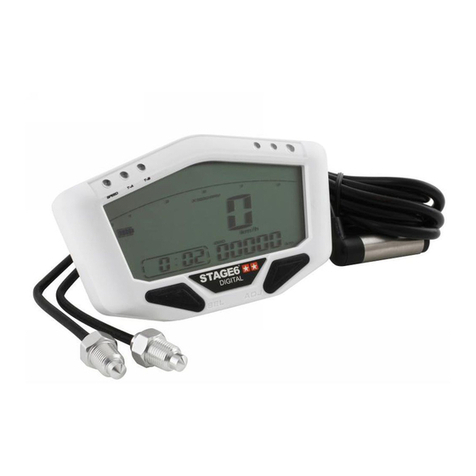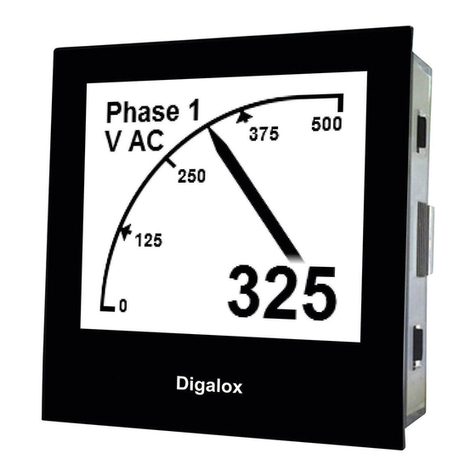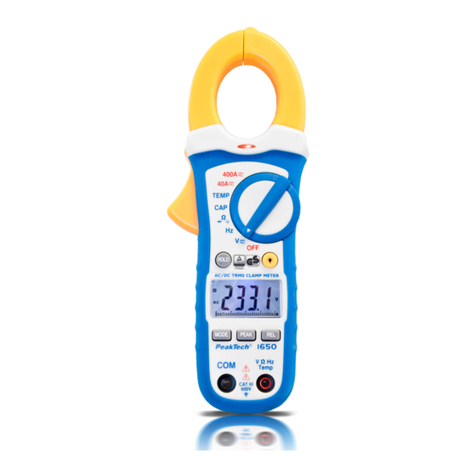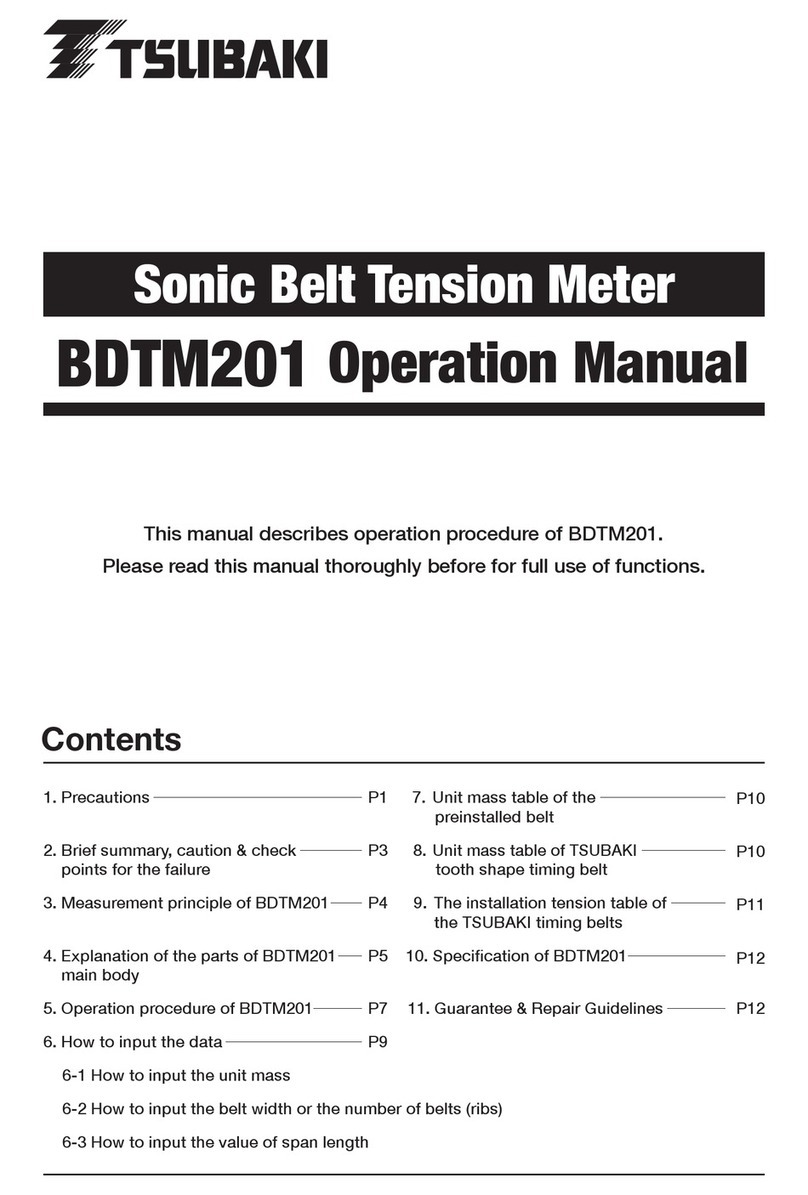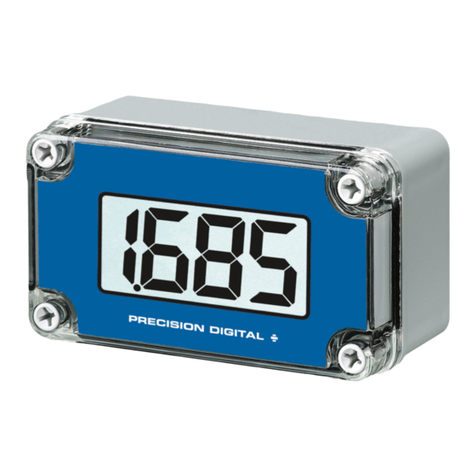
Digital High Frequency Analyser HF W 35C
© Gigahertz Solutions GmbH, 90579 Langenzenn, Germany Revision 4.7 (October 2007) Page 4
Properties of HF Radiation…
For in-depth information on the subject of
“Electro Smog” from high frequency radiation
refer to the extensive literature. This instruc-
tion manual focuses on those properties that
are particularly relevant for measurements in
residential settings.
Across the specified frequency range (and
beyond), HF radiation causes the following
effects in materials exposed to it:
1. Partial Permeation
2. Partial Reflection
3. Partial Absorption.
The proportions of the various effects de-
pend, in particular, on the exposed material,
its thickness and the frequency of the HF
radiation. Wood, drywall, roofs and windows,
for example, are usually rather transparent
spots in a house.
A continuously updated most extensive collection
of exact shielding property data of construction
materials by Dr. Moldan/Prof. Pauli is available
under www.drmoldan.de (the file is also available
in English).
Minimum Distance
In order to measure the quantity of HF radia-
tion in the common unit “power density“
(W/m²), a certain distance has to be kept
from the HF source. It is important to keep a
minimum distance of one to two meters be-
tween the HF35C and the source of radia-
tion.
Background: Close to the source the electrical
and the magnetic field have to be measured
separately; one cannot calculate the one from the
measured values of the other and vice versa. In
free field conditions one can. It is measured as
power density in mW/m2or µW/m².
Polarization
When HF radiation is emitted, it is sent off
with a “polarization“. In short, the electric
component of an electromagnetic wave
propagates either vertically or horizontally.
Cellular phone technology, which is of great-
est interest to us, is usually vertically polar-
ized. In urban areas, however, it sometimes
is already so highly deflected that it runs al-
most horizontally or at a ±45-degree angle.
Due to reflection effects and the many ways
in which a cellular handset can be held, we
also observe other polarization patterns.
Therefore it is always strongly recommended
to measure both polarization planes, which is
defined by the orientation of the antenna.
Fluctuations with Regards to Space and
Time
Amplification or cancellation effects can oc-
cur in certain spots, especially within houses.
This is due to reflection and is dependent on
the frequencies involved. Most transmitters
or cellular handsets emit different amounts of
energy during a given day or over longer pe-
riods of time, because reception conditions
and network usage change constantly.
All the above-mentioned factors affect the
measurement technology and especially the
procedure for testing. This is why in most
cases several testing sessions are necessary.
…and Consequences for Meas-
uring HF Radiation
When testing for HF exposure levels in an
apartment, home or property, it is always
recommended to record individual measure-
ments on a data sheet. Later this will allow
you to get a better idea of the complete
situation.
It is important to repeat measurements
several times: First, choose different day-
times and weekdays in order not to miss any
of the fluctuations, which sometimes can be
quite substantial. Second, once in a while,
measurements should also be repeated over
longer periods of time, since a situation can
literally change “overnight.“
Furthermore you should be aware that taking
measurements indoors adds another dimen-
sion of testing uncertainties to the specified
accuracy of the used HF analyzer due to the
narrowness of indoor spaces. According to
the “theory“ quantitatively accurate HF
measurements are basically only reproduci-
ble under so-called “free field conditions”,
yet we have to measure HF inside buildings
because this is the place where we wish to
know exposure levels. In order to keep sys-
tem-immanent measurement uncertainties as
low as possible, it is imperative to carefully
follow the measurement instructions.
As mentioned earlier in the introduction, only
slight changes in the positioning of the HF
analyzer can lead to rather substantial fluc-
tuations in measurement values. (This effect
is even more prevalent in the ELF range.) It is
suggested that exposure assessments are
based on the maximum value within a lo-
cally defined area even though this particu-
















